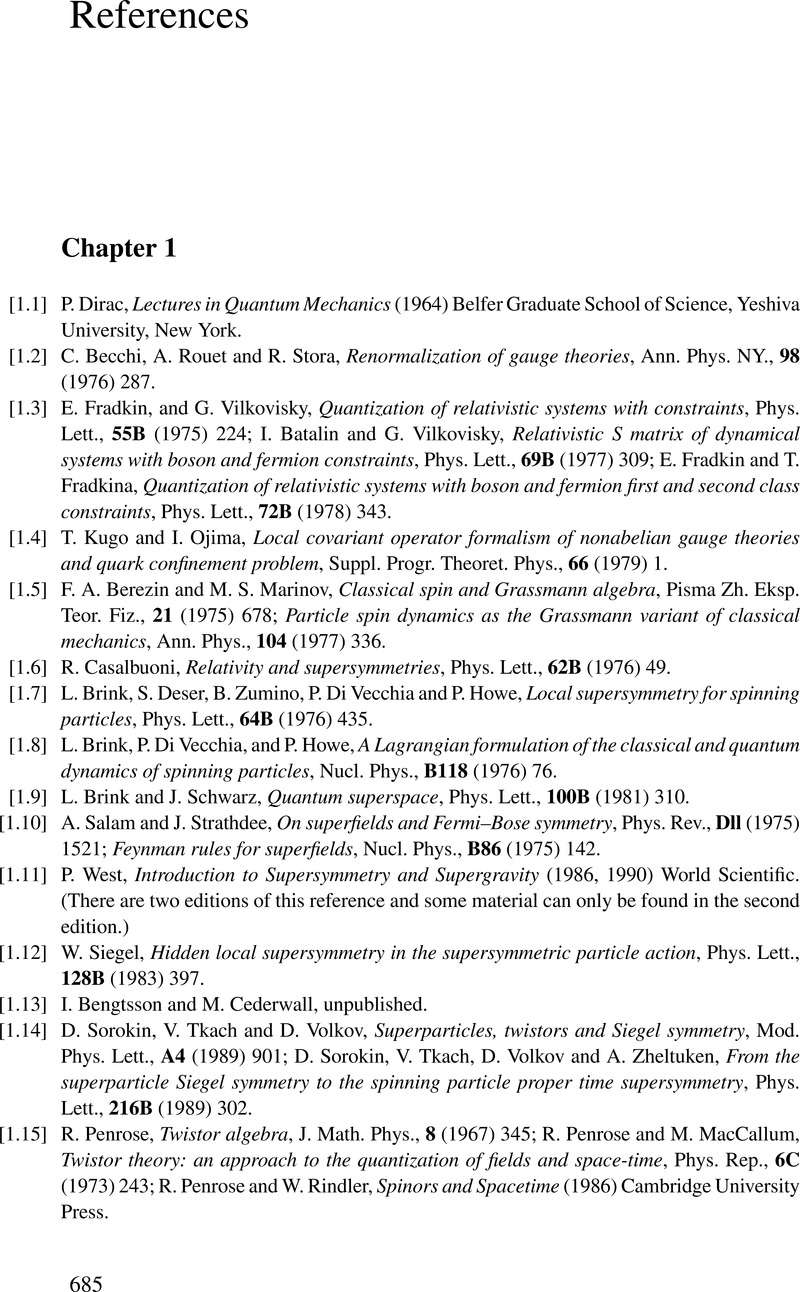Book contents
- Frontmatter
- Contents
- Preface
- 1 The point particle
- 2 The classical bosonic string
- 3 The quantum bosonic string
- 4 The light-cone approach
- 5 Clifford algebras and spinors
- 6 The classical superstring
- 7 The quantum superstring
- 8 Conformal symmetry and two-dimensional field theory
- 9 Conformal symmetry and string theory
- 10 String compactification and the heterotic string
- 11 The physical states and the no-ghost theorem
- 12 Gauge covariant string theory
- 13 Supergravity theories in four, ten and eleven dimensions
- 14 Brane dynamics
- 15 D-branes
- 16 String theory and Lie algebras
- 17 Symmetries of string theory
- 18 String interactions
- Appendix A The Dirac and BRST methods of quantisation
- Appendix B Two-dimensional light-cone and spinor conventions
- Appendix C The relationship between S2 and the Riemann sphere
- Appendix D Some properties of the classical Lie algebras
- Chapter quote acknowledgements
- References
- Index
- References
References
Published online by Cambridge University Press: 05 November 2012
- Frontmatter
- Contents
- Preface
- 1 The point particle
- 2 The classical bosonic string
- 3 The quantum bosonic string
- 4 The light-cone approach
- 5 Clifford algebras and spinors
- 6 The classical superstring
- 7 The quantum superstring
- 8 Conformal symmetry and two-dimensional field theory
- 9 Conformal symmetry and string theory
- 10 String compactification and the heterotic string
- 11 The physical states and the no-ghost theorem
- 12 Gauge covariant string theory
- 13 Supergravity theories in four, ten and eleven dimensions
- 14 Brane dynamics
- 15 D-branes
- 16 String theory and Lie algebras
- 17 Symmetries of string theory
- 18 String interactions
- Appendix A The Dirac and BRST methods of quantisation
- Appendix B Two-dimensional light-cone and spinor conventions
- Appendix C The relationship between S2 and the Riemann sphere
- Appendix D Some properties of the classical Lie algebras
- Chapter quote acknowledgements
- References
- Index
- References
Summary

- Type
- Chapter
- Information
- Introduction to Strings and Branes , pp. 685 - 705Publisher: Cambridge University PressPrint publication year: 2012



